Making it better, color to green
I learned something last fall when I created my first planting beds for spring-flowering bulbs: that bulbs are easy! This spring I also learned that it's fantastic seeing those tufts of green emerge from the cold ground, followed by uplifting splashes of color!
I'm learning something else now though: that foliage doesn't look too great as it feeds the bulbs and slowly declines. So I did something about it.
It was actually my plan all along to put flowering annuals into these beds this year, since I knew once the foliage faded they'd be empty.
So a couple of weeks ago -- before the Mother's Day rush at the local nurseries -- I loaded up on various annuals:
I chose a variety of plants based on several criteria: deer resistance (proven or imagined), color, attractiveness to bees, butterflies, and hummingbirds, height, ties to childhood memories -- you know, the typical stuff.
I chose a couple of different Salvias:
I typically have lots and lots of Salvia coccinea (the red-flowered Salvias) in my yard later in the summer, but I wanted something that the hummers could enjoy now.
Some sun-loving Coleus (not the varieties that like shade):
and a few other things like Marigolds, Cosmos, Zinnias, Mirabilis (4 o'clocks), and snapdragons.
Then I got to work planting them in between the various bulbs. The soil here is freshly-amended clay, so is quite heavy still:
So I didn't bother trying to backfill the holes with the soil I removed. Instead, I used potting mix:
This will give the roots some nice loose stuff to bite into. Will they eventually make it into the thicker soil surrounding these planting pockets? I don't know, but I have a feeling they'll do just fine.
I know that these beds look so much better with little spots of color throughout:
In a month or so the daffodil and tulip foliage should be gone, and these annuals will have the stage to themselves. I planted fairly close together, and am hoping they grow vigorously and form a mass of color.
Since these are mainly heat-lovers and we'll be approaching 100F (38C) this weekend, I don't think I'll have to wait too long to find out.
I'll check back in on these in another few weeks, but in the meantime I will be watching the tall plants grow shorter and the short plants grow taller. A successful garden is all about balance, right?
.

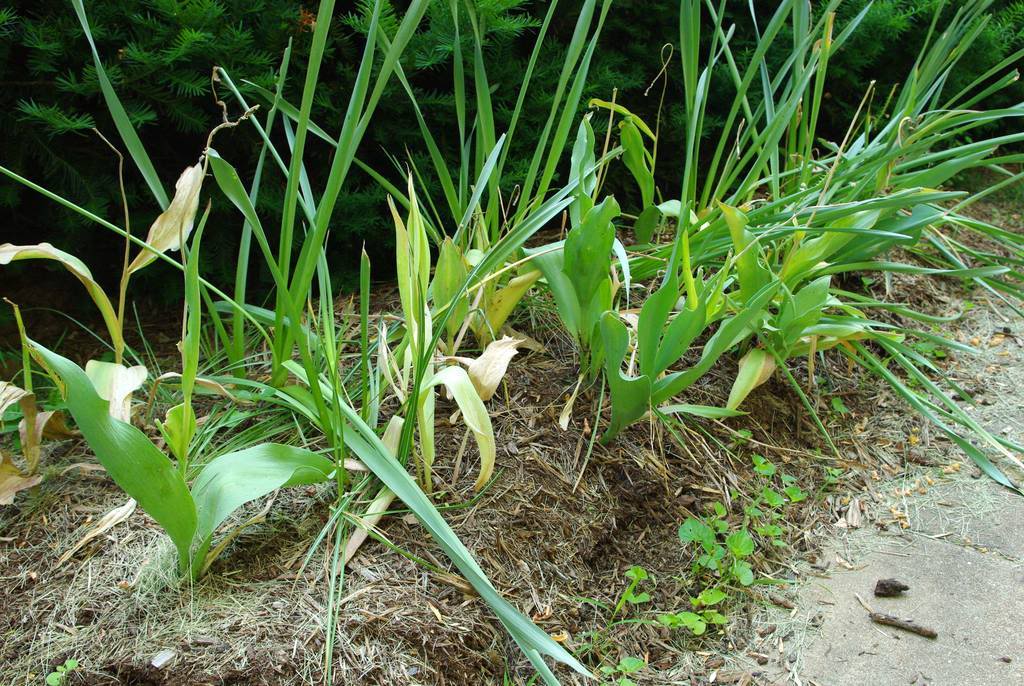
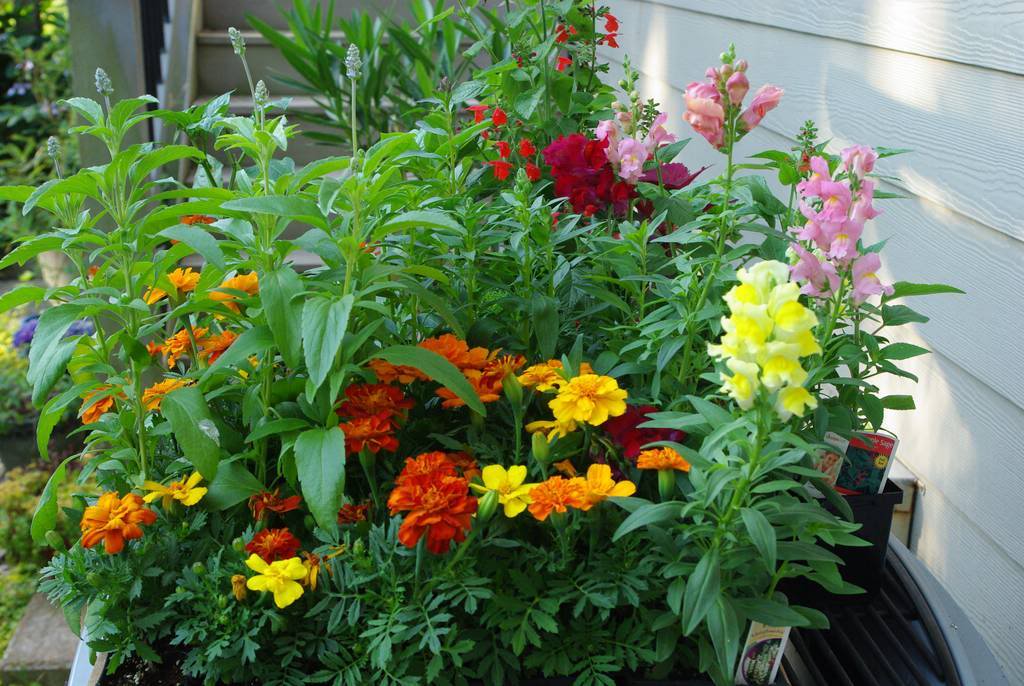
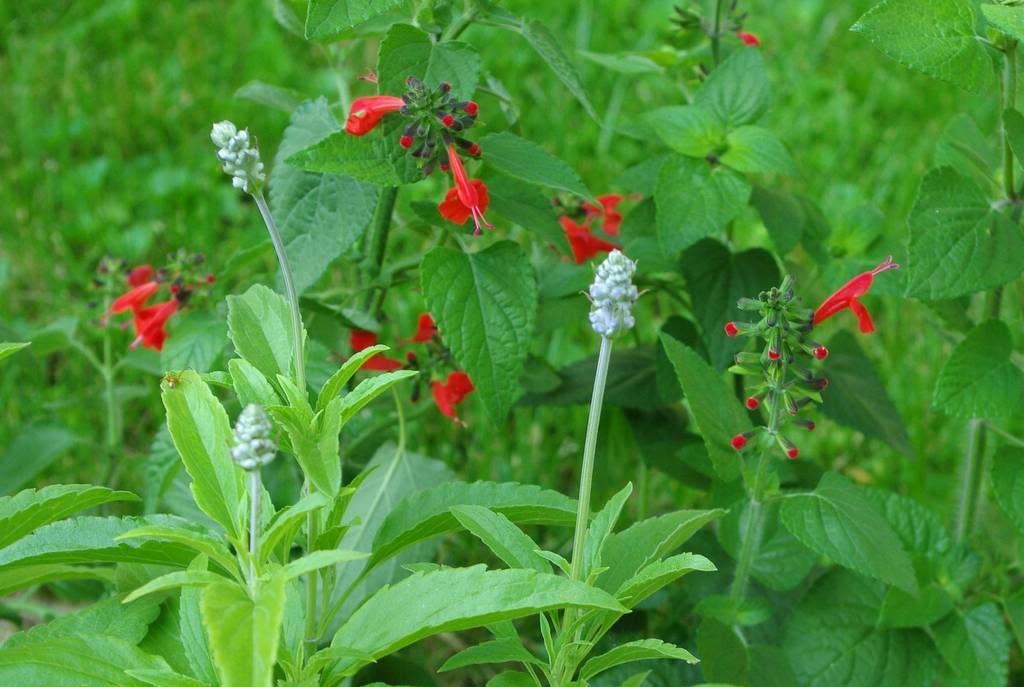
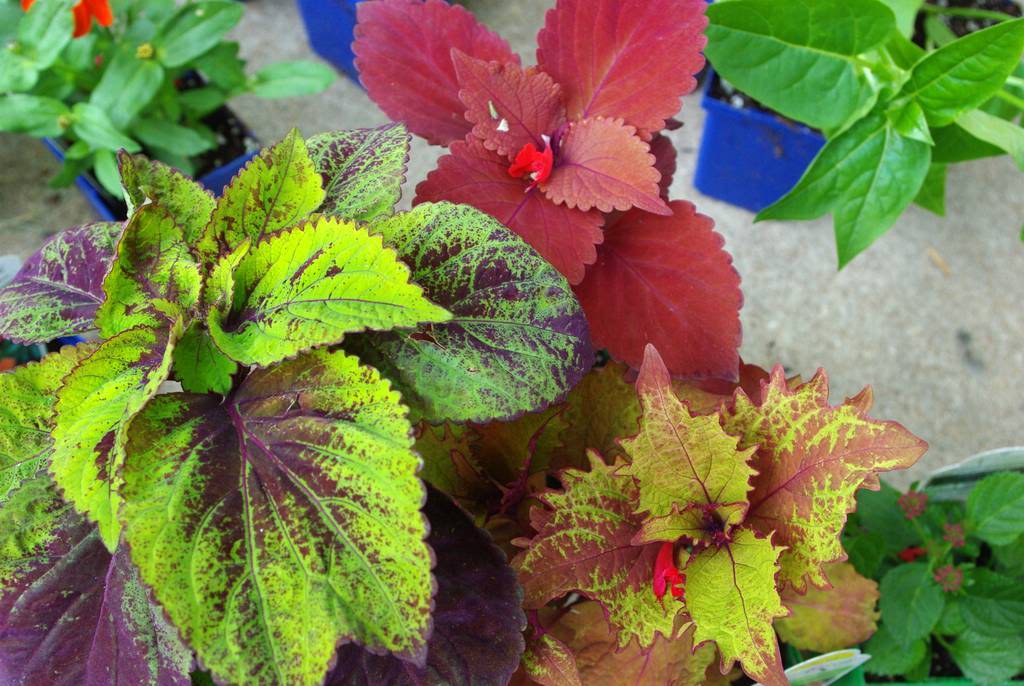
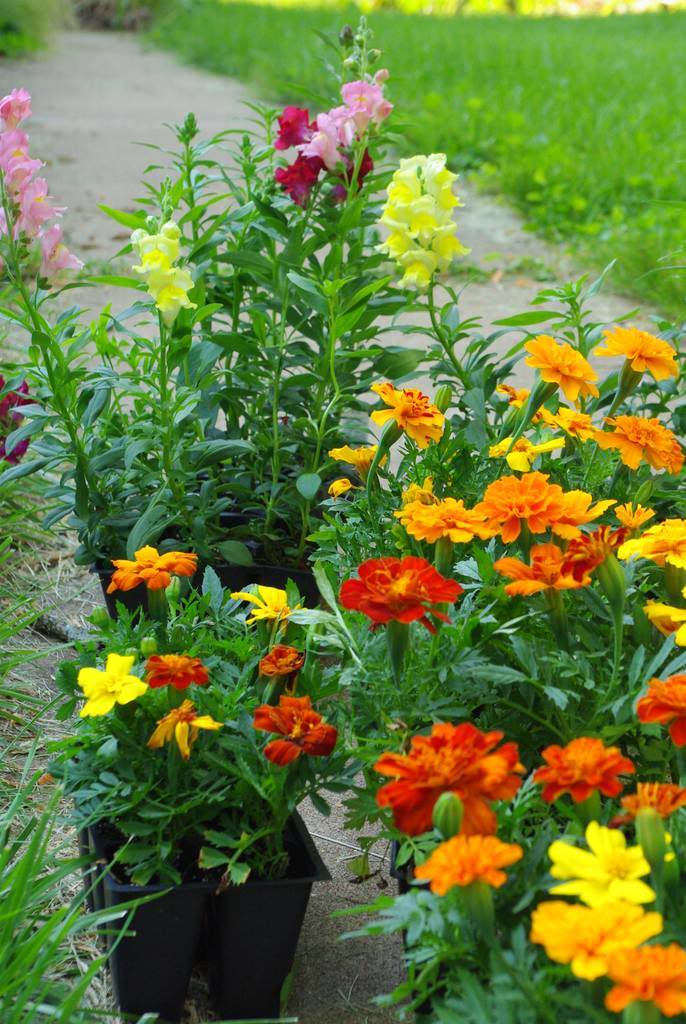
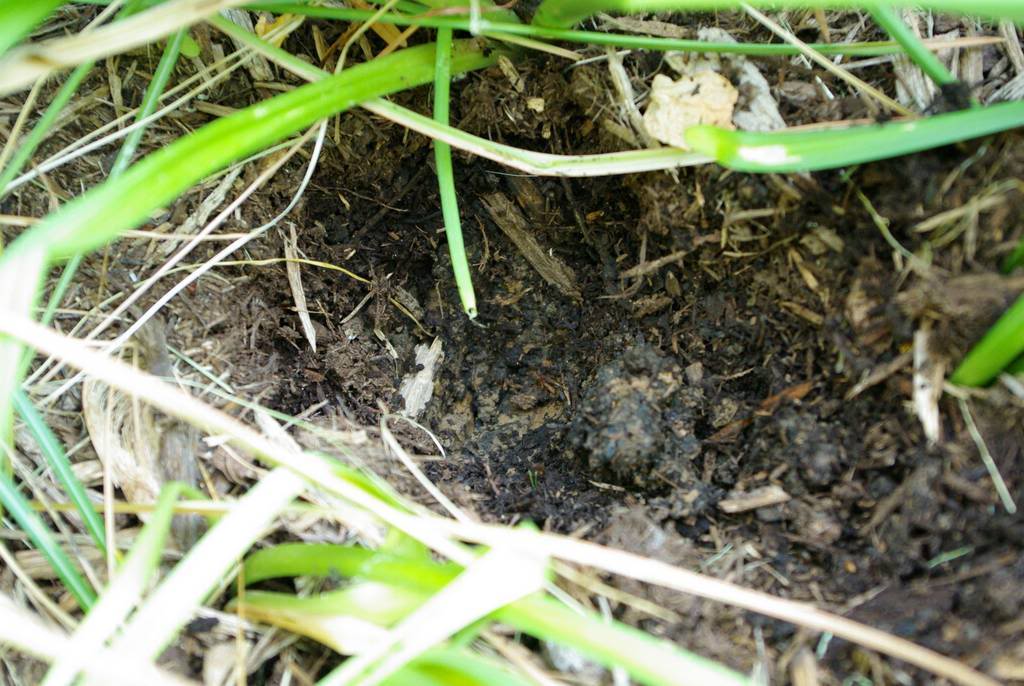
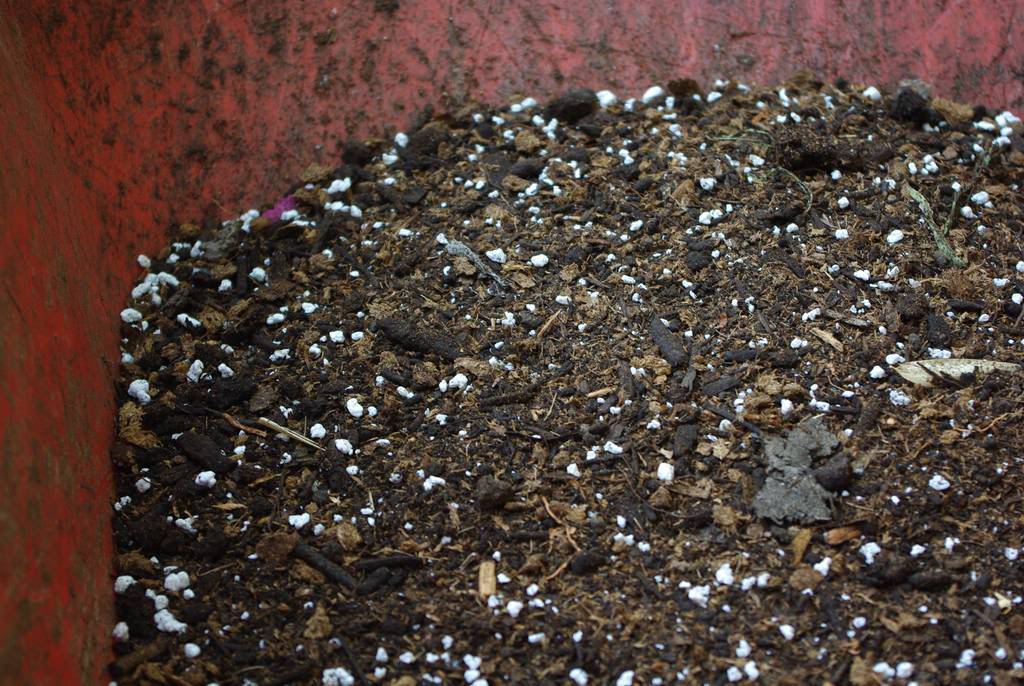
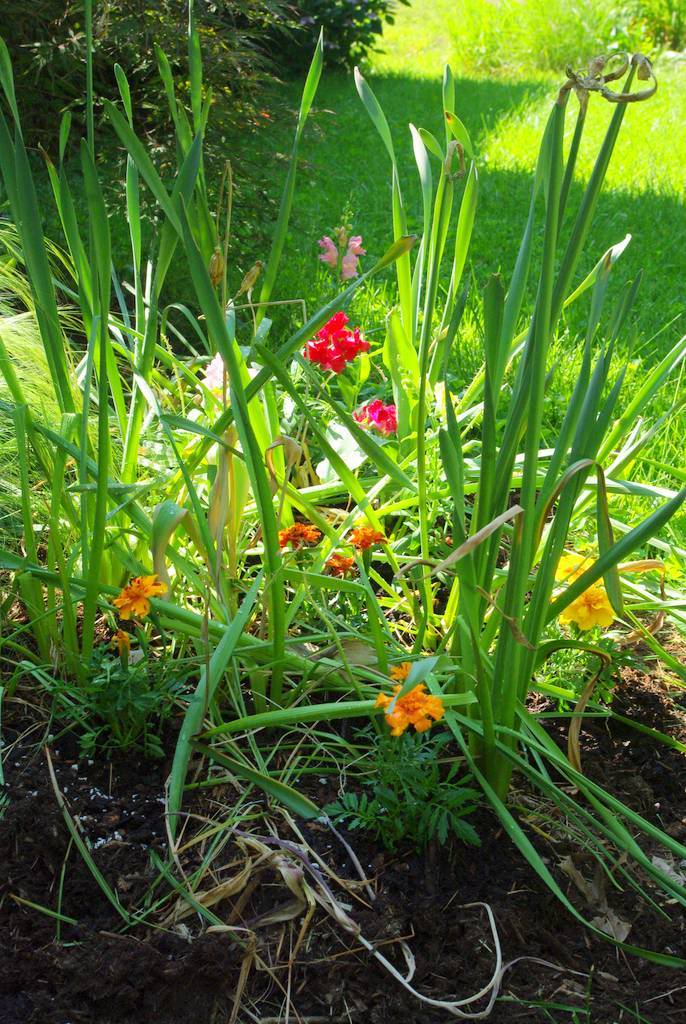
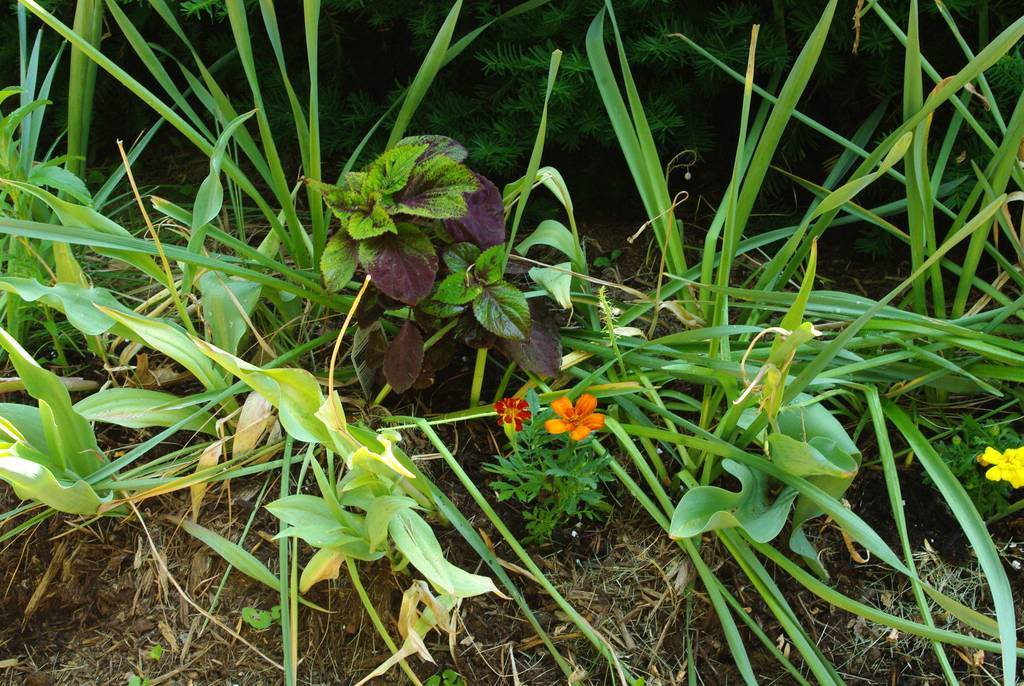
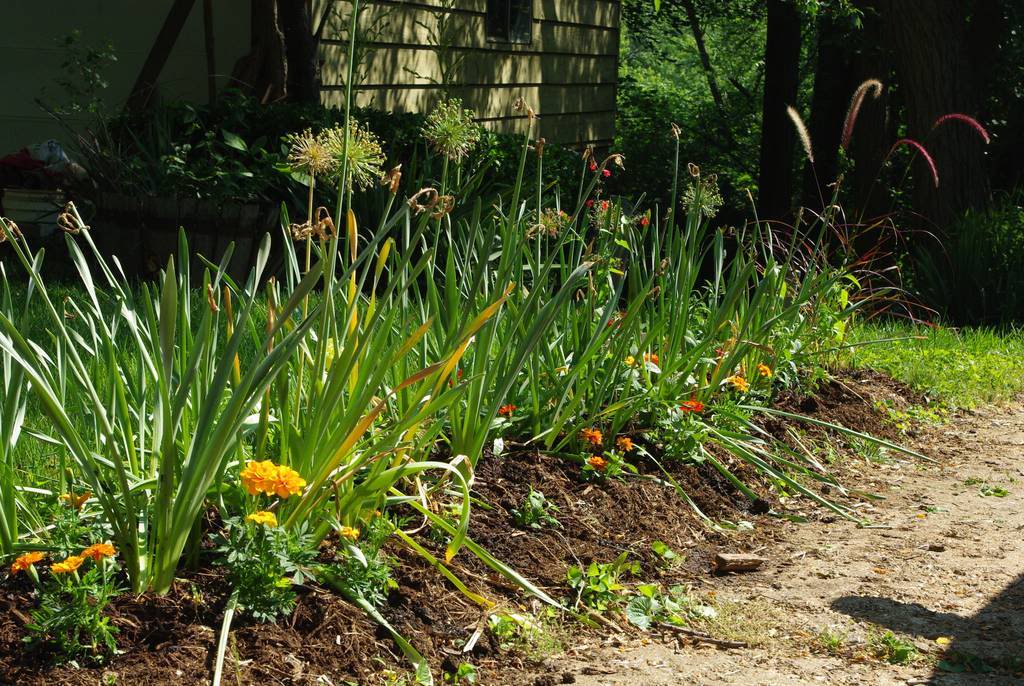




Great solution. I don't like the look of dying foliage either. When I was in Germany, I caught my cousin's husband literally ripping out their tulip leaves, which I didn't think was a good idea because the bulbs need every bit of energy the leaves are able to produce.
So, four o'clocks aren't a nuisance, I'm guessing, where you are, Alan? I'm still trying to get rid of them, six years later. Every now and again, one will try to pop up. Very invasive where I am in TX.
Your solution looks great. Those fading and ugly blades are the only downside to bulbs, but they're totally worth it for the spring show.
Alan, Sandy is correct Mirabilis jalapa is borderline native here in New Jersey, something a bird perhaps eats the seeds here and it self seeds vigorously. Tubers can last decades with annual above ground growth from May till 1st frost.
M: interesting (I assume you meant "invasive", not "native"). I'll have to keep an eye on it then, but as far as I know it's not a problem here. We're a zone colder than you though, and sometimes that's all it takes to make a plant "behave".
It already looks lovely with the greenery and few bits of colour, and is going to look just great once they are flowering. I'm going to do the same here. I didn't enjoy the dying bulb leaves either last year. As you are 6 months ahead of us (verrrry cold here this weekend), I will be watching to see how your plan works out.